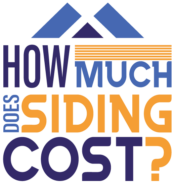
What are the Benefits of Replacing Siding?
When it comes time to replace the siding on your home, there are a number of benefits to be gained. New siding can improve the insulation of your home, making it more energy-efficient and helping you save money on your utility bills. It can also help protect your home from the elements and can add to the overall curb appeal of your property. So if you’re thinking about replacing your siding, be sure to weigh all the benefits before making a decision.
Benefits of Replacing Siding
When it comes to improving the look and energy efficiency of your home, replacing the siding is an excellent option to consider. Doing so can provide a range of benefits that will help to increase the value and appeal of your property.
Insulation
- For starters, new siding can improve the insulation of your home, helping you save money on energy bills in the long run.
- It can also help protect your home from the elements and can even add to its overall curb appeal.
Customization
- In addition, when you replace the siding of your property, you may be able to customize it with a variety of colors and textures that will give your home an updated look.
- This can be a great way to make your house stand out from the rest of the neighborhood.
- Replacing siding can significantly boost the value and appeal of your home, making it an attractive option for potential buyers should you decide to sell in the future.
Security
- Finally, replacing your siding can also help to increase the security of your home.
- By installing modern siding materials, you can rest assured that your property will be better prepared for any potential weather-related disasters that may occur in the future.
- Additionally, stronger siding materials can provide an extra layer of protection against burglars and other intruders.
Home Value
- Replacing siding is an effective way to increase the value of your home.
- This is because new siding can improve the insulation of your home, making it more energy-efficient and helping you save money on your utility bills.
- It can also help protect your home from the elements, which can have a damaging effect on the exterior of a structure over time.

For these reasons, replacing siding is a great way to improve the look and energy efficiency of your home. So if you’re thinking about tackling this project, make sure to weigh the pros and cons before making a decision. With careful consideration, replacing the siding can be a great investment for your property.
Factors to Consider to Benefit the Most From Replacing Your Homes Siding
Before replacing your home’s siding, there are several factors to consider.
Material
- First, you should determine what type of material is best suited for your home.
- There are a variety of siding materials on the market, including vinyl, aluminum, wood, cedar, and fiber cement.
- Each material has its own advantages and disadvantages and you should carefully weigh the pros and cons of each before making a decision.
Materials and Labor
- In addition, you should research the cost of the materials and labor associated with replacing your home’s siding.
- You should also consider any potential tax incentives or rebates that may be available for energy-efficient siding options.
- Finally, be sure to understand all warranties and guarantees on the siding you choose and keep any records of the installation process.
All in all, replacing your home’s siding can be a great way to improve its value and appeal while also increasing its energy efficiency. Just remember to do your research beforehand so that you make an informed decision that will provide you with the best possible outcome.

Cost of Replacing Siding
The cost of replacing siding on a house will vary based on the material chosen, the size of the home, and whether or not you hire a contractor to do the job.
- Generally speaking, vinyl siding is one of the more affordable choices for homeowners looking to replace their siding.
- On average, homeowners can expect to pay between $4 and $8 per square foot for the materials.
- Installation of the new siding will also add to the cost. If you hire a contractor, labor costs can range from $1 to $4 per square foot.
- Taking all this into account, replacing siding on a typical 1,500-square-foot house can range from $7,000 to $15,000.
Overall, replacing your home’s siding is a great investment that can provide long-term benefits in terms of energy efficiency and aesthetic appeal. With careful planning and research, you can choose a siding material that fits your budget while also providing the best possible outcome for your property.
What Type of Replacement Siding Will Benefit You Most?
Replacing the siding of a house can be a great way to boost its value and appeal, as well as increase its security and energy efficiency. There are several types of siding materials on the market, each with its own advantages and disadvantages. Understanding these different options is essential for making the best decision for your home.

Vinyl Siding
- Vinyl siding is one of the most popular choices for homeowners looking to replace their existing siding.
- Vinyl is durable, low-maintenance, and offers a variety of colors and styles to choose from. It also tends to be more cost-effective than other materials.
Aluminum Siding
- Aluminum siding is another option that provides durability and strength.
- It is also less likely to be damaged by weather or pest infestations and is available in a range of colors and styles.
Wood Siding
- Wood siding provides a classic look that adds warmth and character to any home.
- It requires more maintenance than other materials, but it is also the most energy-efficient option as it has better insulation properties.
Fiber Cement Siding
- Finally, fiber cement siding is a relatively new material that is becoming increasingly popular due to its low-maintenance properties and durability.
- It also provides excellent insulation benefits, making it a great choice for homes in cooler climates.
Ultimately, the best type of replacement siding will depend on your budget, desired look, and climate. Make sure to research all of your options before making a decision so that you can choose the material that will benefit you most in the long run.
